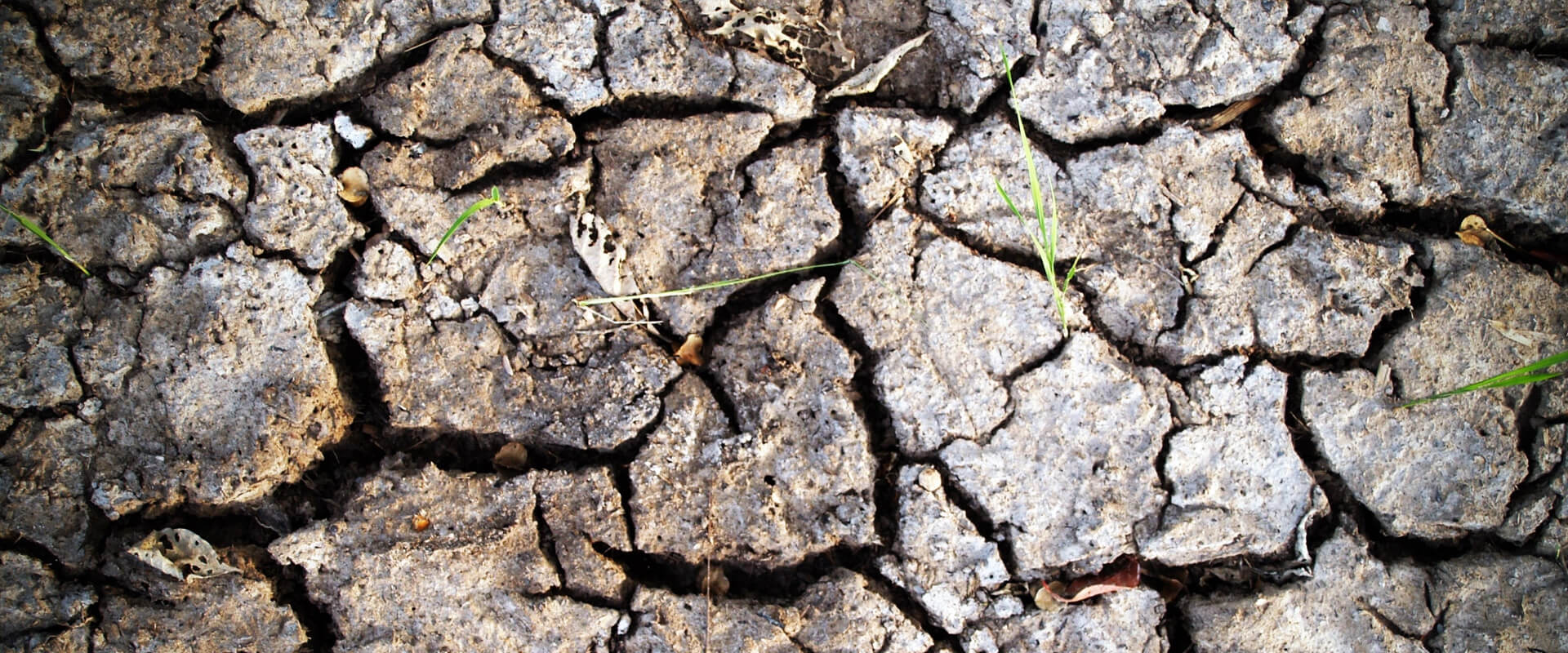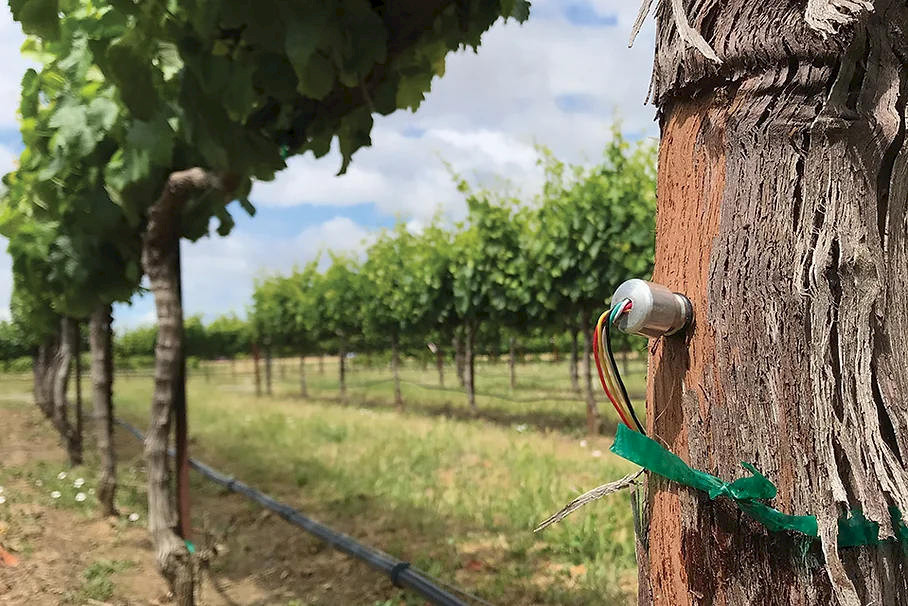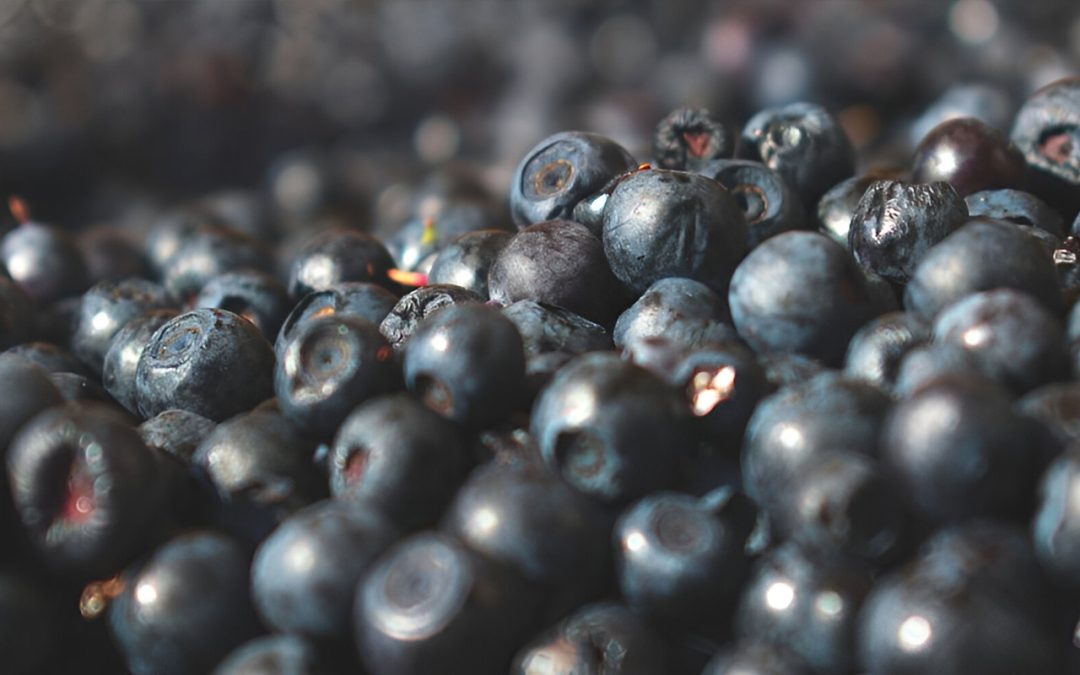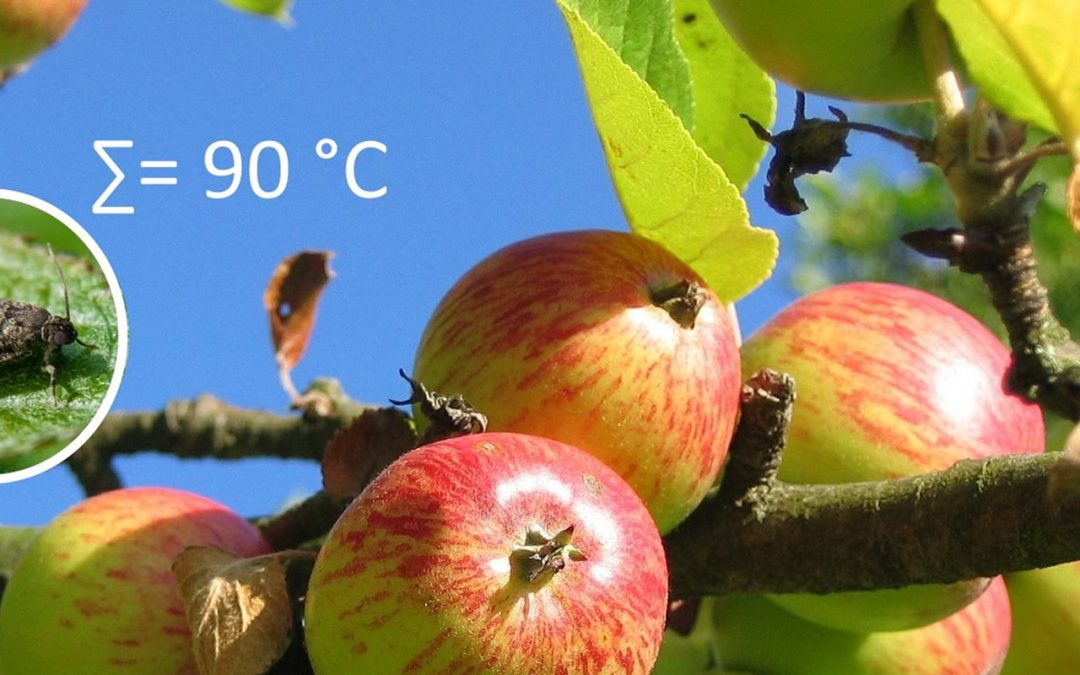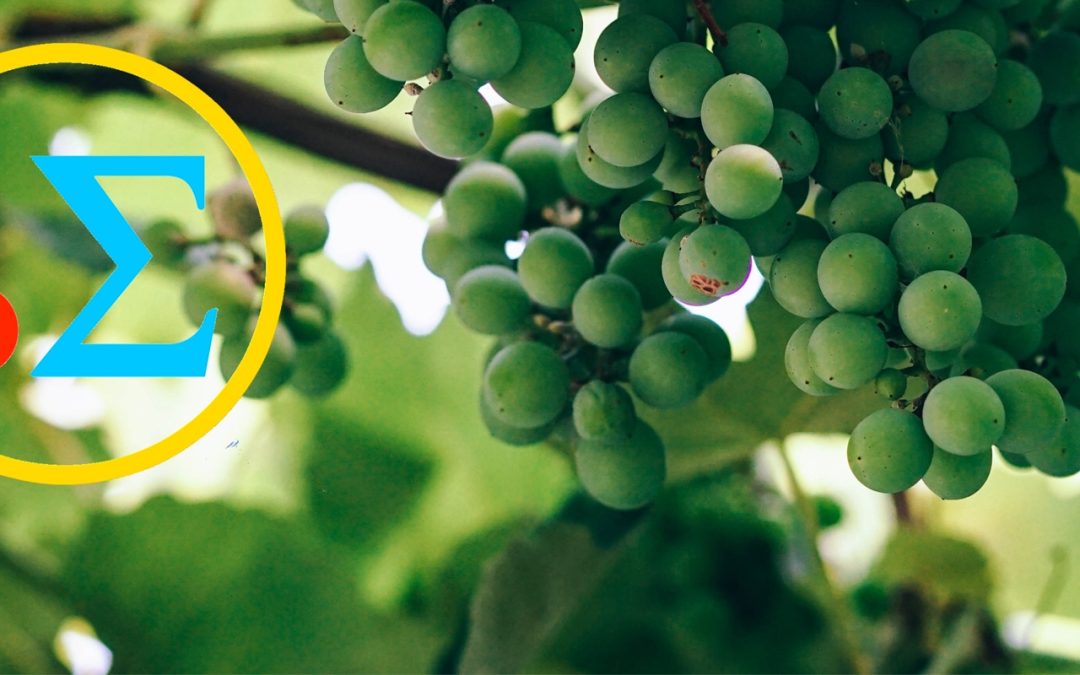Soil moisture information is essential for creating precise irrigation schedules and amounts. Global trends in irrigation aim to determine the exact amount of water required for the uninterrupted growth and development of plants without reducing yields. Various methods are used to determine the current moisture level in the soil.
Soil moisture determination methods:
- Visual
- Gravimetric
- Mathematical (water balance calculation)
- Using sensors
4.1. Measuring electrical conductivity (electrometric method)
4.2. Measuring the force (tension) with which water is held in the soil
4.2.1. Watermark sensor
4.2.2. Volumetric sensor
4.3. Measuring dielectric constant
4.4. Measuring thermal characteristics
4.5. Measuring/estimating using spectral reflection
4.6. Measuring using radioactive radiation
The method chosen by the producer depends primarily on the budget, the time required for moisture determination, the precision of the results, and practicality.
1. Visual method of determining soil moisture
As the name suggests, this method involves visually inspecting the soil in the field or plantation. This method is not reliable, and the results are subjective, making it impossible to determine reliable irrigation schedules and amounts. Producers can use this method to determine the timing of agro-technical operations related to soil cultivation. It is not recommended for irrigation.
2. Determining moisture using the gravimetric method
The gravimetric method, or drying method, is a direct way of determining moisture by drying a soil sample and measuring the difference between the weight of the wet and dry sample. This method is precise and reliable and is recommended for experimental work. The moisture is determined by placing a certain amount of soil in a container, heating it to 105°C, and drying it until all the water evaporates. The weight difference represents the evaporated water, which is then used in a formula to calculate the soil moisture, expressed in weight percentage (% by mass). To convert weight percentage to volume percentage, information on the soil’s bulk density, which is determined in the laboratory, is required.
Due to its complexity and the need for extensive sampling and moisture determination (throughout the growing season for irrigation needs), it is impractical for everyday use. This method can be used for calibrating various sensors/devices and for experimental work.
3. Mathematical (water balance calculation)
The mathematical calculation of the water balance consists of daily calculations of reference evapotranspiration. There are dozens of formulas to calculate reference evapotranspiration, and the reliability of the formula depends on the number of parameters included. Today, the Penman-Monteith formula is most commonly used for this purpose, as it has proven to be the most precise method for both humid and arid climates. The formula is suitable for daily evapotranspiration calculations. To calculate it, data on air temperature (average, min, and max), air humidity (min and max), solar radiation, and wind speed are required. In addition to evapotranspiration, the calculation of the water balance also requires information on precipitation, crop coefficient (for each day of the growing season), field capacity, the maximum amount of readily available water in the soil, and irrigation records to ensure the water balance calculation is accurate.
Daily reference evapotranspiration represents the amount of water lost through evaporation and transpiration from a large area that is well-watered (no water deficit) and covered with grass 8-15 cm high. From this definition, it is clear that evapotranspiration data do not apply to all crops and growing systems. For this reason, crop coefficients have been developed. Each crop has its own coefficient, which changes depending on the growth stage. In the early growing stages, the leaf area is smaller, and thus transpiration is lower. As the plant mass increases, so does the water requirement. Crop coefficients are lower at the beginning of the season, increase toward the middle, and decrease again toward the end.
Reference evapotranspiration (ETo) is multiplied by the crop coefficient (Kc) to obtain crop evapotranspiration (ETc).
The water balance is calculated according to the formula:
Dw=Dwpd+ETc−Pef−Irr
Where:
- Dw = water deficit
- Dwpd = previous day’s water deficit
- EToc = crop evapotranspiration (mm)
- Pef = effective precipitation (mm)
- Irr = irrigation (mm)
Capillary rise of water from deeper soil layers and surface runoff can also be included in the formula. However, due to the complexity of determining these values and their minimal effect on the final result (in most soils), they are often excluded.
This method of determining water deficit in the soil was traditionally reserved for field research by universities and institutions, which is understandable given the number of parameters and the time required to obtain results.
Fortunately, with the development of new technologies, affordable agrometeorological stations are now available to measure all the necessary data for evapotranspiration calculations. Additionally, there are computer and web applications that calculate the water balance based on this data.
An example of irrigation based on evapotranspiration is found in vineyards in Australia, Chile, California, and other regions where agricultural crops cannot meet their water needs solely through precipitation. A good example of evapotranspiration-based irrigation is the CIMIS project in California, where the California Water Resources Department publishes daily weather conditions and calculated reference evapotranspiration on its website. Based on this information, California farmers determine irrigation schedules and amounts.
In viticulture, the RDI (Regulated Deficit Irrigation) method is often used, where only a certain percentage of the crop’s total evapotranspiration is irrigated. The percentage depends on the grapevine’s developmental stage and the viticulturist’s goals (reduce vegetation, increase yield, reduce yield, etc.). Fruit growing, crop farming, and other agricultural sectors are also turning to this method of soil moisture determination.
4. Sensor-based methods of determining soil moisture
Today, sensor-based moisture determination is the most widespread method. It is characterized by simplicity, speed in data collection, and quick decision-making on irrigation timing and quantity.
4.1. Determining moisture with a tensiometer
This method is based on measuring the force (negative pressure, tension) with which water is held in the soil. The tensiometer is most reliable when the soil moisture level is higher. It is placed in the root zone of the plant and acts as an “artificial root with a dial.” An example of a tensiometer is the Irrometer. The Irrometer consists of a sealed tube filled with water, a specially vacuumed dial, and a porous tip placed in the soil at the desired root depth. Under dry conditions, water is drawn out of the instrument, reducing the amount of water in the instrument and creating negative pressure, which is then read on the dial. The drier the soil, the higher the values. The opposite occurs during irrigation. The negative pressure created by the dry soil draws water back into the instrument, and the dial shows lower values.
The Irrometer measures the full range of soil moisture necessary for optimal plant growth. The readings indicate when to start or stop irrigation for the best results in specific crops and conditions.
Advantages of this method include relatively low cost, easy installation, and ease of use. However, care must be taken with it because its construction makes it prone to breakage.
4.2. Electrometric method of moisture determination
The electrometric method is based on measuring the electrical conductivity of the medium, which depends on the moisture content in the soil. Several types of sensors use this method to measure soil moisture, including gypsum sensors (Watermark sensor) and sensors with electrodes in vitroplast (Volumetric sensors).
Although both operate on the same principle, differences exist.
4.2.1. Watermark
Watermark sensors have been in use since 1978. One of the main advantages of these sensors is that they can remain in the soil throughout the growing season, providing continuous detailed information. Watermark sensors are compact, easy to install and maintain, and relatively inexpensive. Data can be collected using data loggers or connected to an agrometeorological station for automatic data transmission to servers, accessible through computer or mobile applications.
Watermark sensors are the most well-known gypsum sensors that measure electrical conductivity. Since the electrodes are embedded in gypsum, they do not come into direct contact with the surrounding soil, only with the water penetrating the gypsum. Electrical conductivity is measured in a medium that is always constant (gypsum). The sensor is not affected by soil pH, soil type, or temperature.
The measured values are converted into centibars (cb), which represent the force required by the plant to draw water into its roots. Values range from 0 to 200 cb, with lower values indicating more water-saturated soil and higher values indicating a greater water deficit.
The sensor manufacturer provides the following interpretation of the measured values:
- 0 – 10 cb = Soil is well saturated with water
- 10 – 30 cb = Soil contains adequate water for normal plant growth and development (except in sandy soils, where water deficit starts to occur at around 30 cb)
- 30 – 60 cb = Typical values when irrigation is needed (except in heavy soils)
- 60 – 100 cb = Typical values when irrigation is needed for heavy soils
- 100 – 200 cb = Soil becomes too dry for optimal yields
Another advantage of Watermark sensors is the ability to install multiple sensors at different depths, allowing better monitoring of soil moisture in the root zone, water movement, and moisture at greater depths.
4.2.2. Volumetric sensors
The electrodes of this sensor are located between two layers of vitroplast and are well insulated from contact with the measured soil. They measure the dielectric conductivity and convert it into soil moisture expressed as volumetric percentage (Vol.%). Like Watermark sensors, these can be buried in the soil throughout the season and at multiple depths. The volume of soil in which the sensor measures moisture depends on the size of the sensor, ranging from 0.3 liters to 1 liter. Smaller sensors are more suitable for greenhouse production and container cultivation, while larger sensors are more suitable for outdoor measurements. The sensors are typically calibrated for most soil types.
4.3. Determining moisture by measuring dielectric constant
This method includes radar reflectometry (TDR – time domain reflectometry) and frequency reflectometry (FDR – frequency domain reflectometry). TDR is considered a precise method for estimating soil water content. The principle is based on tracking the time it takes for an electromagnetic signal to pass through steel sensors inserted into the soil and reflect back to the receiver. The difference in time, i.e., signal speed, is due to the dielectric constant, which is influenced by the water content in the soil.
Advantages of this technology include its precision, minimal disruption to soil structure, relative insensitivity to soil pH, the ability to measure soil EC simultaneously, and the fact that calibration is not required for specific soil types. The disadvantages are the equipment cost, the possibility of limited application in conditions with high salt or clay content, and relatively low sensitivity to changes in soil moisture.
The FDR method works similarly to the TDR method. It is also based on monitoring electromagnetic signals, but in terms of voltage. The cause of the difference between a given voltage and the voltage reflected from the sensor is the dielectric constant, which is related to the soil moisture content.
4.4. Determining moisture by measuring thermal characteristics
This approach is an indirect measurement method that utilizes changes in the soil’s thermal characteristics depending on its moisture content. Thermal characteristics include thermal conductivity, thermal diffusivity, temperature, and specific heat capacity.
The heat transfer method uses an energy source (usually a heated needle) and temperature sensors (thermocouples or thermistors) placed in porous ceramics equilibrated with the surrounding soil with a certain moisture content. The needle is heated, and the rate of heat transfer is measured by the temperature sensors. Thermal conductivity affects the temperature changes measured before and after heating.
The heat flux method is based on applying a thermal pulse at one location and measuring its arrival at another by measuring the temperature at that location. The time it takes for the heat to travel from one location to another is determined by the thermal conductivity, which is related to soil moisture, as soil itself is a poor heat conductor. This method is also used to determine water constants by calibrating the sensors.
4.5. Determining moisture using spectral reflection
This approach belongs to non-contact methods and is used in remote sensing. It is not a direct measurement but an estimation of soil moisture over a wider observation area. Nowadays, data collected by drones are increasingly important for production, in addition to satellite imagery.
The method is based on the knowledge of the spectral curve of water, i.e., the fact that water absorbs radiation in the near-infrared range, so moist soils reflect less radiation and absorb more. Based on the data obtained, software-assisted analysis and interpretation, and subsequent field verification, it is possible to estimate the amount of moisture in a given area.
This approach has some drawbacks, such as factors affecting reflection itself, including the amount of organic matter in the soil, cultivation methods, and soil structure. However, due to the advantage of covering a larger area, it holds significant value in modern agriculture.
4.6. Determining moisture by measuring radioactive radiation
Measuring soil moisture using neutrons and gamma rays provides favorable results, but this method requires expertise and caution.
To use such equipment, a certified person is required, and the device must be stored appropriately and transported in a suitable vehicle to the measurement location due to the dangerous radiation. Because of this, this method of soil moisture measurement has not been widely adopted in our region.
dr. sc. Vedran Krevh
Tomislav Dvorski, mag.ing.agr.
Source:
Bittelli M. (2011). Measuring Soil Water Content: A Review. HortTechnology, vol. 21, no. 3, 293-300
Chard J. (2016). Watermark soil moisture sensors: Characteristics and Operating Instructions, Utah State University
IAEA (2008). Field Estimation of Soil Water Content, International Atomic Energy Agency, Vienna
Jaić M. (2017). Usporedba TDR metode (time domain reflectometry) i metode tenziometra u praćenju sadržaja vode u tlu, Poljoprivredni fakultet u Osijeku, Sveučilište Josipa Jurja Strossmayera u Osijeku
Lukanu G., Savege M.J. (2006). Calibration of a frequency-domain reflectometer for determining soil-water content in a clay loam soil, Soil-Plant-Atmosphere Continuum Research Unit, School of Environmental Sciences, University of KwaZulu-Natal, Pietermaritzburg, South Africa
Madjar S., Šoštarić J. (2009). Navodnjavanje poljoprivrednih kultura, Poljoprivredni fakultet u Osijeku, Sveučilište Josipa Jurja Strossmayera u Osijeku
Oluić M. (2001). Snimanje i istraživanje Zemlje iz Svemira: sateliti, senzori, primjena Hrvatska akademija znanosti i umjetnosti i GEOSAT d.o.o. Zagreb
Ondrašek G., Petošić D., Tomić F., Mustać I., Filipović V., Petek M., Lazarević B., Bubalo M. (2015). Voda u agroekosustavima, Sveučilište u Zagrebu, Zagreb
Oyeyemi K.D., Sanuade O.A., Oladunjoye M.A., Aizebeokhai A.P., Olaojo A.A., Fatoba J.O., Olofinnade O.M., Ayara W.A., Oladapo O. (2018). Data on the thermal properties of soil and its moisture content, Data in Brief, Vol. 900-906
Pernar N., Bakšić D., Perković I. (2018). Terenska i laboratorijska istraživanja tla, Šumarski fakultet, Sveučilište u Zagrebu
Romić D. i sur. (2016.). Pilot projekt navodnjavanja drvenastih kultura (vinove loze i masline) uzgajanih na osvojenim krškim površinama na području Donje polje-Jadrtovac kod Šibenika – Izvješće za 2015. godinu, Agronomski fakultet, Sveučilište u Zagrebu, Institut za jadranske kulture i melioraciju krša Split
Šimunić I. (2013). Uređenje voda, Hrvatska Sveučilišna naklada, Sveučilište u Zagrebu
Tepšić D. (2017). Usporedba metoda elektrometrije i tenziometra za praćenje sadržaja vode u tlu, Poljoprivredni fakultet u Osijeku, Sveučilište Josipa Jurja Strossmayera u Osijeku
Tomić F., Ondrašek G. (2009). Vodni režim supstrata u zaštićenom prostoru, Agronomski fakultet, Sveučilište u Zagrebu






